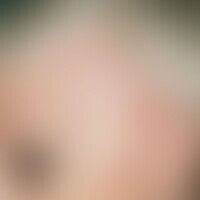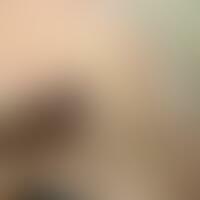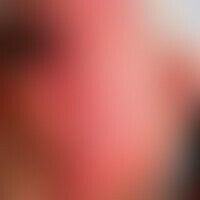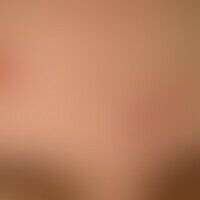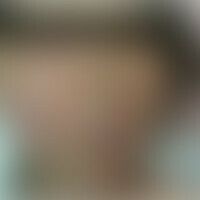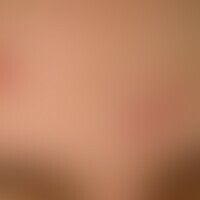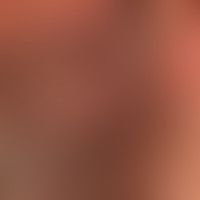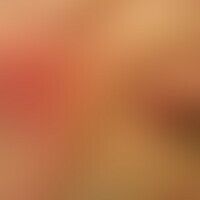
Folliculitis barbae L73.8
Folliculitis barbae: Chronic therapy-resistant, inflammatory follicular papules and pustules in the area of the cheeks. front view of the finding.
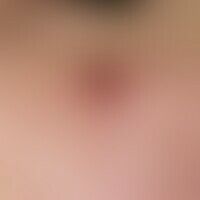
Pyogenic granuloma L98.0
Granuloma pyogenicum (pyogenic granuloma). 0,6 cm tall, soft, spherical, slightly bleeding, red-blue to black, sharply defined, rapidly exophytic-growing elevation. Formation after scratching trauma.

Psoriasis seborrhoic type L40.8
Psoriasis seborrhoeic type: for several months constant and therapy-resistant, only slightly elevated, homogeneously filled, symmetrical, red-yellow, slightly accentuated plaques, no type I allergies detectable.

Basal cell carcinoma destructive C44.L
Basal cell carcinoma, destructive, since many years progressive, large-area, protuberant, foetid smelling tumor in a 100-year-old woman. Complete loss of the orbit, maxillary sinus, zygomatic arch and eyeball as well as partial loss of the glabella.

Erythema perstans faciei L53.83
erythema perstans faciei. persistent, asymptomatic, symmetrically arranged facial redness. no other diseases known.

Urticaria acute spontaneous L50.8
Acute spontaneous urticaria with angioedema; since a few days rather discreetly developed urticaria with recurrent angioedema of the eyelids (which characterizes the clinical picture).
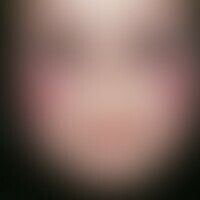
Erythema infectiosum B08.30
erythema infectiosum. after slight "flu-like" infection intensive redness (and swelling) of both cheeks (cheek whistle face). 2 days later little symptomatic exanthema with anular erythema on the arms. cervical lymphadenopathy. laboratory: o.B.

Teleangiectasia I78.8
Teleangiectasia. Harm sleeve, reticularly branched, irregular vascular dilatations in the area of both cheeks.

Merkel cell carcinoma C44.L
Merkel cell carcinoma. solitary, fast growing, asymptomatic, bright red, coarse, shifting, smooth lump with atrophic surface. the appearance in the area of UV-exposed sites is typical.

Chronic actinic dermatitis (overview) L57.1
Dermatitis chronic actinic: Chronic laminar eczema reaction which is essentially limited to the exposed skin areas Typical of chronic actinic dermatitis and thus distinguishable from a toxic light reaction (type acute solar dermatitis) is the blurred transition (eczematous scattering reactions) from lesional to healthy skin.
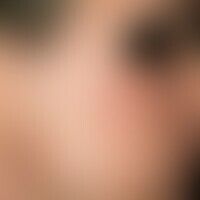
Acne (overview) L70.0
Acne vulgaris (overview): severe clinical picture with inflammatory papules, papulo-pustules and pustules in a 17-year-old patient; increasing course of the disease since 2 years. extensive scarring beginning in the central cheek area. picture of acne vulgaris (type: acne papulo-pustulosa, grade IV). classic indication for systemic isotretinoin therapy!
